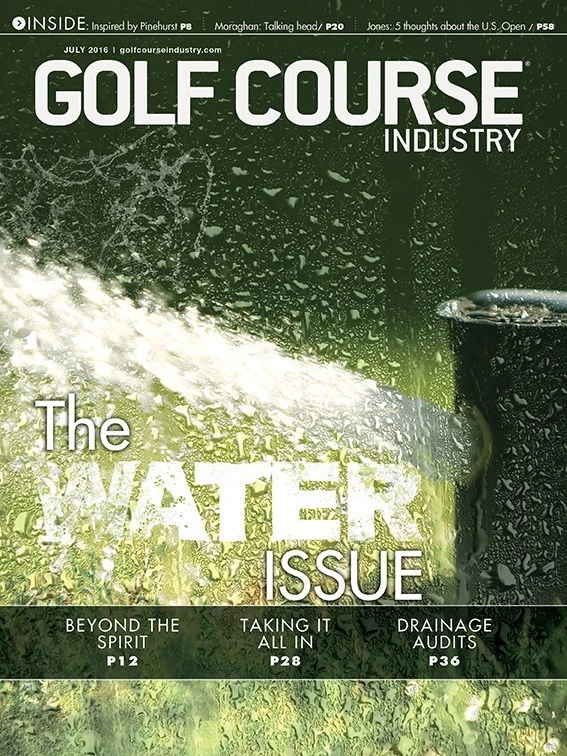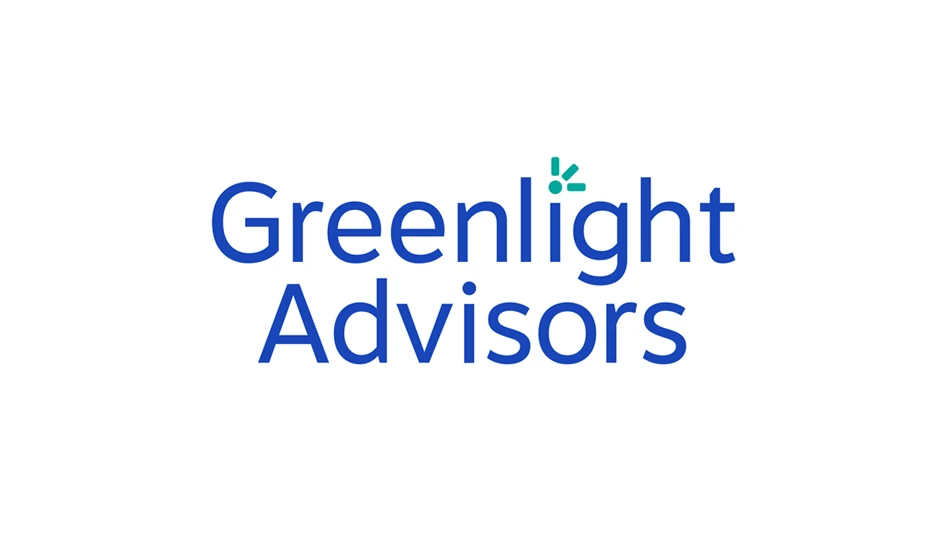
Water is a fundamental component for sustaining any known form of life. But depending on the quality of water and what it is being used for, it could lead to unintended consequences.
Salty irrigation water causing trees to lose their leaves, for example, raises alarm. It used to happen to the oak and fruit trees at Royal Poinciana Golf Club in Naples, Fla., when superintendent Matt Taylor irrigated with 100 percent recycled water provided by the city. “It would be the most bizarre thing,” he says. “Wherever the irrigation water hit, it would turn them brown and they would defoliate. And then in a period of time they would come back. You always knew when you would turn the irrigation water back on.”
Although the city of Naples has since taken measures to improve the quality of its recycled water, water providers continue to unintentionally spell misfortune onto superintendents by supplying them with less than desirable recycled supplies. Water treatment facilities abide by different guidelines than golf courses when monitoring the beneficial and harmful qualities of recycled water, so irrigation water often contains high concentrations of salts and nutrients that can have an adverse effect on turf and foliage. Superintendents can address these issues by monitoring salt and nutrient levels, implementing the right cultural practices and developing relationships with local government officials.
Irrigating a course with recycled water – also known as reclaimed water, effluent water, treated effluent water and treated wastewater – does have its benefits. It is often cheaper than irrigating with raw or potable water and can have the sustainable benefit of filtering out waste and springing up healthy turf. “The percentage of golf courses using effluent has been increasing every single year,” says Bill Nauroth, owner of Golf Maintenance Solutions. “I think it should in some respects because it’s a use of that water that may free up water for other uses. I don’t think it’s a bad thing. I think it just has to be able to be managed, and everyone has to understand at the properties what needs to happen to be able to take that water and make it work.”
The Naples Water Treatment Plant began supplying recycled water to about 10 golf courses in 1988, says Bob Middleton, the city’s utilities director. The initiative has expanded so that every golf course in Naples irrigates with all, or nearly all, reclaimed supply, he says. Some courses use irrigation ponds; others hook up directly to the city’s feed.
While the city expanded the program, the local ocean tide continued to ebb and flow, and saltwater in the ground infiltrated into the city’s wastewater collection system.
Once residences were put on recycled water, customers addressed concerns that its high salt contents would kill their plants, Middleton says. In response, city workers installed liners on gravity pipes where chlorides were entering the sanitary sewer system, pushing chloride levels from 600 parts per million to below 200.
The irrigation water at Royal Poinciana recorded bicarbonate levels that were nearly 1,000 parts per million and sodium levels close to 600 parts per million, Taylor says. Since the sewer repairs, those numbers have decreased to 206 and 95, respectively.
Salt levels in a recycled water supply are usually directly related to the quality of the potable source the water district has reclaimed, says Mike Huck, principal at Turf & Irrigation Services in Orange County, Calif.
Recycled water users in the Southwestern U.S. typically see salt levels that are roughly double that of the potable supplies within the same area, Huck says. Coinciding with the California drought, southern Orange County potable water salt levels have increased from a range of 450 to 500 parts per million closer to 600 parts per million, and recycled supplies have increased from a range of 1,000 to 1,200 parts per million to a range of 1,200 to 1,400 parts per million. This is in part due to drought measures that reduce the dilution of water, such as reductions in shower times, toilet flushes, and washing machine and dishwasher usage. Some regions have also been impacted by increased usage of water from the saline Colorado River.
“Recycled water quality varies hourly and daily as well as between locales and even between treatment facilities in the municipality,” Huck says. Various water districts and facilities treat recycled water differently, depending on a number of factors, including the footprint of the water treatment plant, soil, drainage, the presence of percolation ponds, the presence of water softeners and saltwater intrusion into sewers.
If there is an abundance of water softener use in an area, for instance, it could have a major impact on recycled water supplies, and ultimately, turf quality, Huck says. Water softeners replace calcium and magnesium with sodium through ion exchange processes, and in significant concentrations the sodium can be toxic to plants and damaging to soil. Water softeners discharge all the added salts and the exchanged salts – sodium, chloride, calcium and magnesium– into the sewer system, increasing the water’s total dissolved solids and electrical conductivity, sodium concentration, and sodium adsorption ratio.
Superintendents new to a recycled water system should test their water quarterly to see what comes through their sewer shed at a given time, Huck says. Water quality could be seasonally impacted by an increase in the number of local tourists or from procedures at food processing plants or manufacturing sites.
In irrigation ponds holding recycled, or any, water, salt and dissolved oxygen levels can stratify according to water temperature, Huck says. Micro-diffusers and other efficient aerators can help address some of those problems.
Recycled water can contain ammonium nitrogen, which is not measured in standard irrigation suitability tests, Huck says. While not typically present in significant amounts in natural water sources, ammonium can be converted to nitrate in surface water through natural aeration processes, and when applied to soil, it attaches to soil exchange sites. It is possible that a significant portion of nitrogen in the water – sometimes as much as 50 percent or more – could be in the ammonium form. In addition to performing their regular irrigation tests, superintendents should request an additional ammonium test when submitting samples to a laboratory, he says.
Some California water districts have been disposing of recycled water at “agronomic rates” without performing nitrification and denitrification, Huck says. The potential problem, he says, is the high concentrations of nitrogen that remain in the water supply. “It’s not going into a stream or a creek or out into the ocean where it would cause algae problems and other problems with fish and the frogs and the flora and fauna of those native areas,” he says. “So when it’s going on landscape, they go, ‘Well, hey, free fertilizer for you guys!’ But it’s a ton of it at times.”

Different chemicals that travel through a recycled supply will create different stresses, Nauroth says. “Whatever your water is, is what your soil will become,” he says. To remediate those stresses, superintendents should perform more cultural programs, such as aerifying and amending soil with gypsum or wetting agents, he says.
Before Naples lined the sewers, bicarbonates at Quail Run Golf Club in Naples, Fla., were between 700 and 800 parts per million, and turf suffered from yellowing and a lack of root production, says superintendent Jeff Plourde.
Although Florida soil is sandy, bicarbonate levels have decreased to between 400 and 500. Plourde has reduced his gypsum applications from two to one per summer, and has seen pH levels decrease from between 7.6 and 7.8 levels to between 7.1 and 7.2 levels.
At Dairy Creek Golf Course in San Luis Obispo, Calif., total dissolved solid levels are relatively high, says superintendent Josh Heptig. “We’ve always used wetting agents and flushing practices to try and remove those salts from the greens, as well as synthetic acids and things like that to try and push those chemicals, or bicarbonates, through the soil,” he says.
Due to a decrease in overall water flow, crew have had to flush less. If they have an area with high salt, they will put a hose stand with a pop-up head on a green and run it overnight at a low volume.
For Heptig, the pros of using recycled water – namely sustainability and a sense of solidarity with water-deprived Californians – outweigh the cons. “We’re happy that we have the reclaimed sources, and I think that’s where things are going to go,” he says.
In efforts to reduce negative effects of recycled water on turf, it is best for superintendents to keep an open dialogue with executives at their water treatment plant, Huck says. If superintendents have concerns about salt and nutrient levels, they should address them in conversation. Even if treatment plant executives don’t choose to alter their practices, they will at least understand that superintendents have different notions about water quality.
Bring water quality reports to meetings and steer conversation through the presentation of facts to see you can find common ground, Taylor says. Above all, don’t be adversarial.
Royal Poinciana and the City of Naples have maintained a positive relationship, Taylor says. Representatives from the club attend commission and city council meetings where they inform officials of their role in the once-again eco-friendly procedure. “We continue to sing the message that, ‘Look, we’re recycling this water,’” he says. “‘We’re providing a benefit to the city. We’re taking this water in large quantities and we are recycling it for you. We are finishing the process. And there is no better filter than turfgrass.’”

Explore the July 2016 Issue
Check out more from this issue and find your next story to read.
Latest from Golf Course Industry
- PBI-Gordon Company hires marketing manager Jared Hoyle
- Mountain Sky Guest Ranch announces bunker enhancement project
- GCSAA names Joshua Tapp director of environmental programs
- AQUA-AID Solutions bolsters Sunshine State presence
- Escalante Golf acquires secluded Illinois course
- Tartan Talks 105: Nathan Crace and Todd Quitno
- Disease Discussion 24: Let the turf talk to you
- From the publisher’s pen: Foggy intrigue






